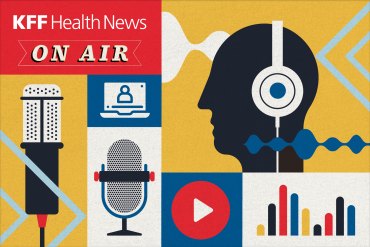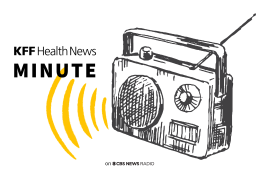States Advance Medical Debt Protections as Federal Support Turns to Opposition
Federal officials reversed their stance on medical debt credit reporting, then came a lawsuit in Colorado. As lawmakers in other states forge ahead with attempts to protect consumers from medical debt, some are reconsidering how they go about it.
Scorpion Peppers Caused Him ‘Crippling’ Pain. Two Years Later, the ER Bill Stung Him Again.
Homemade hot sauce sent a Colorado man to the emergency room with what he called “the worst pain of my life.” But stomach cramps were only the beginning. Two years later, the bill came.
Las regulaciones federales sobre bicicletas eléctricas son limitadas y los esfuerzos para ampliarlas se han estancado, lo que ha dejado a estados y condados con la tarea de llenar ese vacío.
Kids and Teens Go Full Throttle for E-Bikes as Federal Oversight Stalls
States, counties, and schools step in to improve safety amid an uptick in e-bike injuries, while federal regulatory efforts stagnate.
From Narcan to Gun Silencers, Opioid Settlement Cash Pays Law Enforcement Tabs
Local governments have received hundreds of millions of dollars from the opioid settlements to support addiction treatment, recovery, and prevention efforts. Their spending decisions in 2024 were sometimes surprising and even controversial. Our new database offers more than 10,500 examples.
Trump’s HHS Orders State Medicaid Programs To Help Find Undocumented Immigrants
Federal health authorities have taken the “unprecedented” step of instructing states to investigate certain individuals on Medicaid to determine whether they are ineligible because of their immigration status, with five states reporting they’ve received more than 170,000 names collectively.
California Faces Limits as It Directs Health Facilities To Push Back on Immigration Raids
California now has a law requiring hospitals and clinics to improve patient privacy and have clear protocols for handling requests by immigration agents. Legal experts say the state can’t fully protect immigrant patients, because federal authorities are allowed in public places, including hospital lobbies, general waiting areas, and parking lots.
Doctor Tripped Up by $64K Bill for Ankle Surgery and Hospital Stay
A doctor in Colorado became the patient after an accident totaled her car and sent her to the operating room. The hospital kept her overnight, but her insurer stopped paying after she left the emergency room.
Trump Team Takes Aim at State Laws Shielding Consumers’ Credit Scores From Medical Debt
Reversing guidance from the Biden administration, the Consumer Financial Protection Bureau concludes that states cannot bar medical debt from their residents’ credit reports.
Reporters Cover the Shutdown and the Use of AI in Health Care
KFF Health News journalists made the rounds on national or local media recently to discuss topical stories. Here’s a collection of their appearances.
Políticos, investigadores, bibliotecarios y defensores afirmaron que la desfinanciación de los programas de banda ancha, pone en peligro los esfuerzos para ayudar a los residentes rurales y desfavorecidos a participar en la economía moderna y llevar una vida más saludable.
Trump Called Digital Equity Act ‘Racist.’ Now Internet Money for Rural Americans Is Gone.
President Donald Trump called the Digital Equity Act unconstitutional, racist, and illegal. Then the $2.75 billion program for rural and underserved communities to gain internet access disappeared.
Detrás del cobro de esas deudas hay todo tipo de proveedores médicos: grandes cadenas de salud, hospitales rurales pequeños, grupos de médicos, servicios públicos de ambulancia, entre otros.
Receloso del secretario de Salud, RFK Jr., Colorado comenzó a renovar sus políticas de vacunación
Cuatro estados del oeste —California, Hawaii, Oregon y Washington— han formado una alianza para proteger el acceso a las vacunas. Varios estados del noreste han tomado medidas similares.
Wary of RFK Jr., Colorado Started Revamping Its Vaccine Policies in the Spring
Amid concerns that Health and Human Services Secretary Robert F. Kennedy Jr. is undermining trust in vaccines and public health science, some states are seeking new sources of scientific consensus and changing how they regulate insurance companies, prescribers, and pharmacists. Colorado has been at the front of this wave.
Nuclear Missile Workers Are Contracting Cancer. They Blame the Bases.
People who maintained the nation’s land-based nuclear missile arsenal are coming down with similar cancers. The Air Force is wrapping up a large study of the health risks they may have faced.
Workers’ Wages Siphoned To Pay Medical Bills, Despite Consumer Protections
Health care providers and debt collectors are biting from people’s paychecks to cover old medical bills. A KFF Health News investigation in Colorado shows that this aggressive collection practice is widespread even in a state considered to have strong consumer protections.
Big Loopholes in Hospital Charity Care Programs Mean Patients Still Get Stuck With the Tab
Even if people qualify for financial help with their hospital bills, the care they receive may not be covered.
As Trump Punts on Medical Debt, Battle Over Patient Protections Moves to States
Some states are enacting medical debt laws as the Trump administration pulls back federal protections. Elsewhere, industry opposition has derailed legislation.
As the Trump Administration and States Push Health Data Sharing, Familiar Challenges Surface
Despite billions of tax dollars and two decades of effort invested in improving health care data sharing, Americans’ medical records often remain siloed, leading to duplicate testing, increased costs, and wasted time for patients and doctors.























